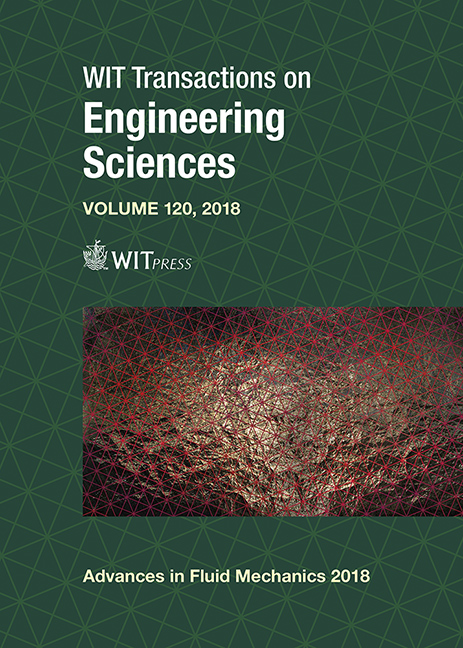INTERFACE DETECTION OF OIL–WATER STRATIFIED FLOW
Price
Free (open access)
Transaction
Volume
120
Pages
12
Page Range
71 - 82
Published
2018
Size
534 kb
Paper DOI
10.2495/AFM180081
Copyright
WIT Press
Author(s)
KSHANTHI PERERA, MADURANGA AMARATUNGA, RUNE W. TIME
Abstract
Interfacial shape of stratified flow of two liquids in pipes may take a planar or curved shape depending on the physical properties of the fluids, wall-fluid wettability, the geometrical dimensions and the fluids hold-up. It is traditionally accepted that the interfacial curvature is present in capillary and small-scale systems where the surface tension effect is significant against gravity effects. However, it is possible that interfacial curvature is present in liquid–liquid systems with small density differences or in reduced gravity systems due to dominating surface phenomena. Two phase flow of oil (density = 788 kg/m3, viscosity = 1.6 mPa.s) and water (density = 997 kg/m3, viscosity = 1 mPa.s) in a horizontal pipe was investigated for stratified flows. The longitudinal view was recorded using high-speed video imaging, while the cross sectional view of the flow was captured via Electrical Capacitance Tomography (ECT). As a third method, the interfacial level at the mid-pipe was calculated by referring to a work reported in literature. In addition, the interfacial level and the curvature in stratified smooth flow (ST), were calculated using CFD simulations as well. The ECT images indicated a blurred interfacial margin where the interface was reconstructed with a considerable thickness. However, the interfacial level at the pipe wall shown by the cross sectional ECT images were comparable with that of the high-speed images and the CFD simulations. Nevertheless, a significant interfacial curvature was encountered in ECT images towards the mid-pipe, which is 4.3 times deeper than the calculated value. CFD results agreed well with the calculated interfacial level using constant curvature arc model. In ECT, the depth of the curvature at the mid pipe seemed to be far more than the reality due to the possible field distortion effects occurring when the electrical flux lines pass through the media of high permittivity contrast (oil–water). Therefore, it was found that ECT can predict the interfacial oil–water level at the walls with acceptable accuracy, while it over-predicts the interfacial curvature present in the mid-pipe region. It is important to note that the ECT electrodes have their highest sensitivity near the wall region.
Keywords
oil–water stratified flow, interfacial curvature, electrical capacitance tomography, high-speed imaging, CFD





